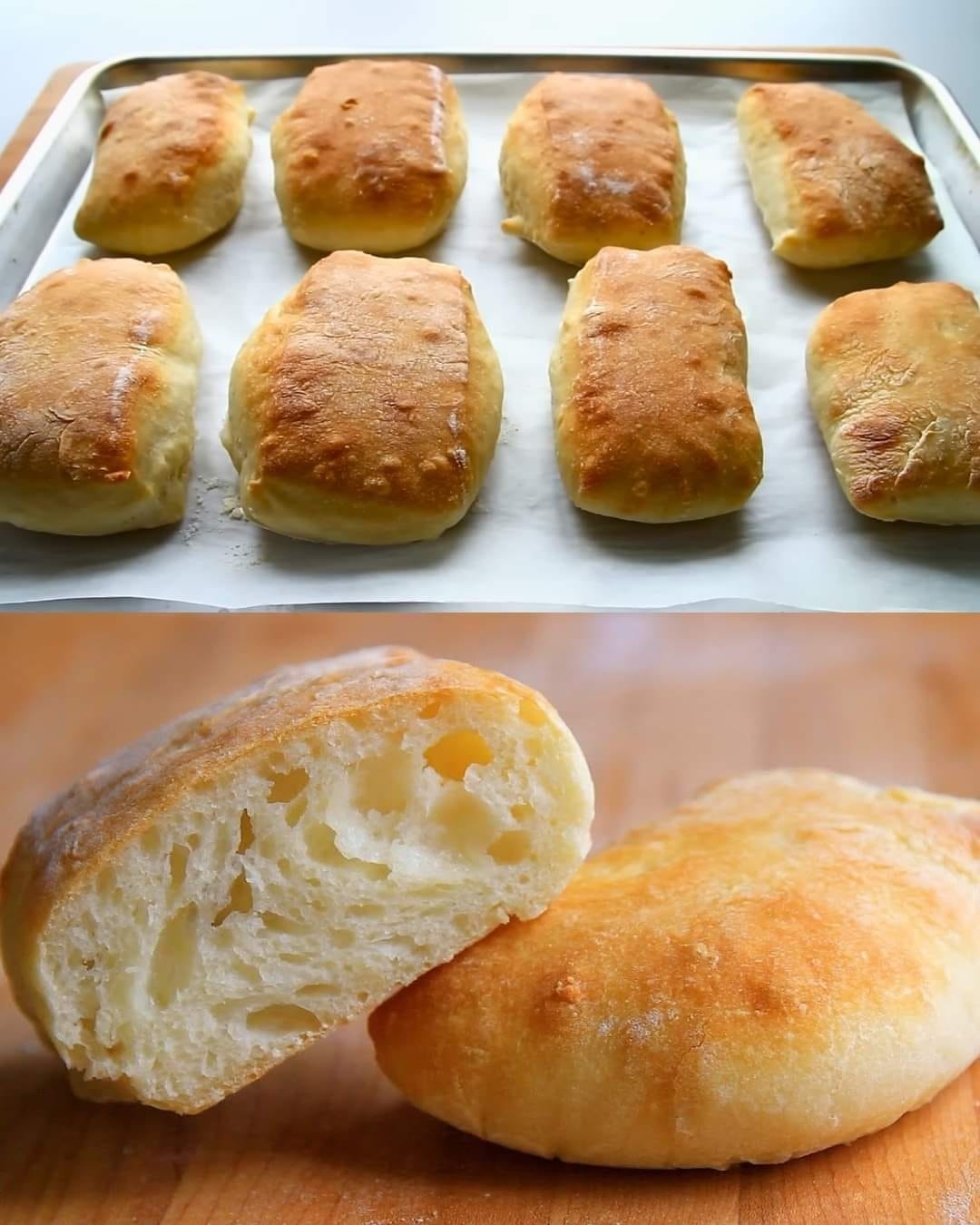
Easy and Budget-Friendly Ciabatta Bread
Instructions
Step 1: Prepare the Dough
- Activate the yeast: In a large mixing bowl, combine the warm water and yeast. Let it sit for about 5-10 minutes until the yeast is dissolved and frothy. If using instant yeast, you can skip the waiting time and proceed directly.
- Mix in the flour and salt: Add the flour and salt to the yeast mixture. Stir with a wooden spoon or a dough whisk until a sticky dough forms. The dough will be very wet and sticky—this is normal for ciabatta dough.
- Rest the dough: Cover the bowl with plastic wrap or a clean kitchen towel and let the dough rest at room temperature for 1-2 hours, or until it has doubled in size. For best results, let the dough rise in a warm, draft-free area.
Step 2: Shape the Dough
- Prepare the work surface: Lightly flour a clean work surface. Carefully turn the dough out onto the surface. The dough will be very sticky, so use floured hands or a dough scraper to handle it.
- Shape the dough: Gently fold the dough into a rough rectangle, being careful not to deflate it too much. You can divide the dough in half to make two smaller loaves or keep it as one large loaf.
- Final rise: Transfer the shaped dough onto a parchment-lined baking sheet. Cover with a kitchen towel and let it rise again for about 30-45 minutes. The dough should puff up slightly.
Step 3: Bake the Bread
- Preheat the oven: While the dough is resting, preheat your oven to 425°F (220°C). If you have a baking stone, place it in the oven while it preheats. Otherwise, you can bake the bread directly on the parchment-lined baking sheet.
- Bake the ciabatta: Once the dough has risen, bake it in the preheated oven for 20-25 minutes, or until the crust is golden brown and the bread sounds hollow when tapped on the bottom. If you’re using a baking stone, carefully slide the parchment paper with the dough onto the stone.
- Cool the bread: Remove the ciabatta from the oven and let it cool on a wire rack. Allow it to cool completely before slicing.
Tips and Tricks
- Hydration is key: The high water content in ciabatta dough is what gives the bread its airy, holey crumb. Don’t be tempted to add more flour, even if the dough seems too sticky.
- Steam for a better crust: To create a crispier crust, you can place a shallow pan of water in the oven while it preheats to generate steam. Alternatively, you can spray the oven walls with water just before baking the bread.
- Variations: Add herbs like rosemary or thyme to the dough for a fragrant twist. You can also sprinkle the top with coarse salt or sesame seeds before baking.
- Storage: Ciabatta is best enjoyed fresh, but it can be stored in a paper bag at room temperature for up to 2 days. For longer storage, freeze the bread in an airtight bag for up to 3 months. Thaw and reheat in the oven to refresh the crust.
Conclusion
Making homemade ciabatta bread is simpler than you might think, and the results are incredibly rewarding. With a few basic ingredients and some patience, you can enjoy fresh, homemade ciabatta that rivals any bakery loaf. Serve it warm with olive oil, use it for sandwiches, or simply enjoy it on its own. This easy and budget-friendly recipe is sure to become a staple in your baking repertoire.
Enjoy baking your own ciabatta bread at home, and don’t hesitate to customize it with your favorite herbs or toppings!
